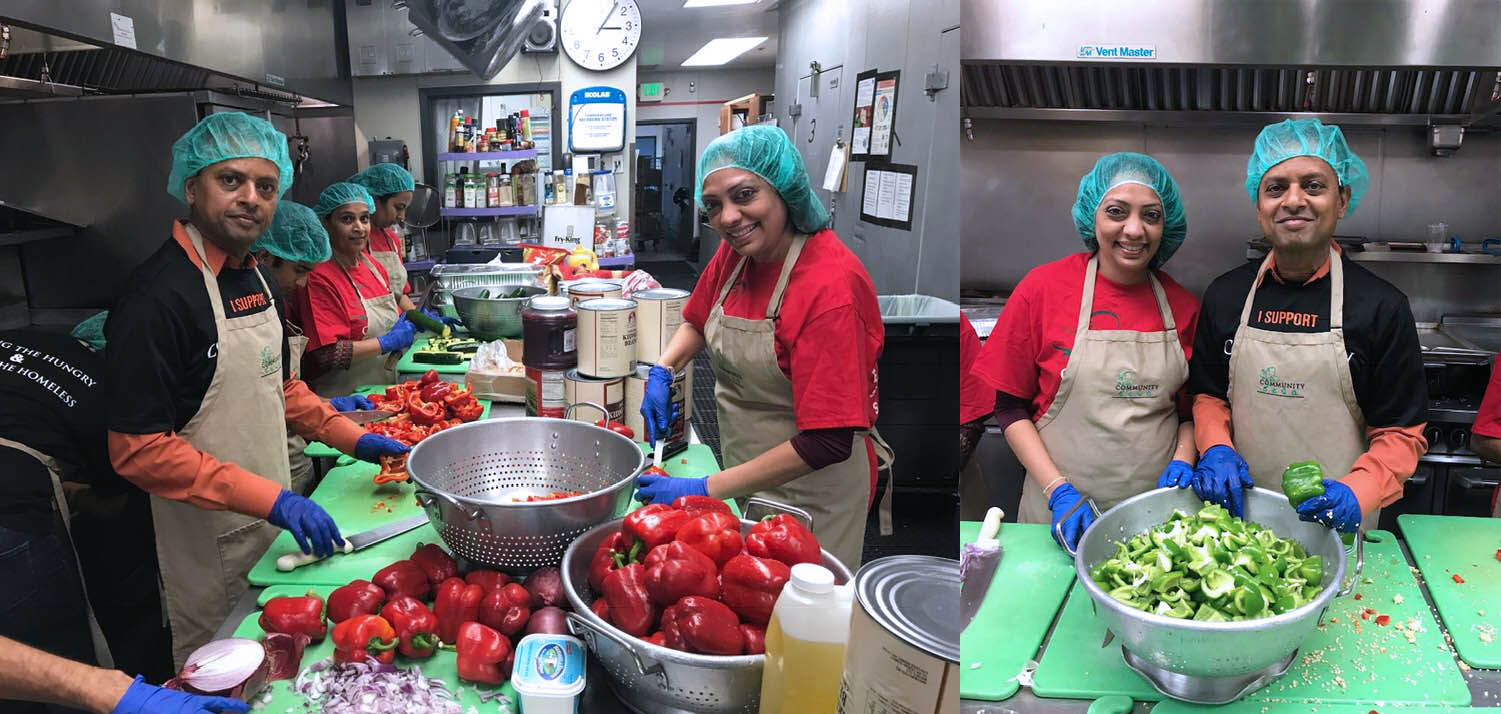


Addressing homelessness is a key component of my agenda. The homelessness in California exceeds that of the other 49 states combined. We need to find sustainable solutions to ensure we address this. I have treated every homeless person with respect. There was a time when I got a call from Felton about a homeless person who was lost and struggling. I contacted my local sheriff team, and they were able to team up with sheriff and police units to find and successfully assist the person.
As an immigrant who came into this country with just a few hundred dollars and an American dream, I believe that I have to give back to this country, a country that embraced me and provided me unbound opportunities. There is a reason why my campaign started in the poorest part of San Jose. There are folks in Silicon Valley who have been left behind, don’t have a voice, and income inequality has widened every year. The artists, the musicians and the gig economy workers are feeling the pressure; many have been pushed out due to rising home prices. I have a plan to address this issue with the Mega Silicon Valley plan. Visit RishiKumar.com/traffic
I have organized activities to help the homeless with food drives, jackets, and helping out the homeless shelters. I have supported the efforts of for profit and nonprofit ventures to train our homeless population and get them to join the Silicon Valley workforce. I am keenly invested in addressing the root cause. It begins with education. I launched the no-charge Entrepreneurship Bootcamp for youth across Silicon Valley, benefitting thousands of disadvantaged students. By teaming up with San Jose's Mayor Sam Liccardo, we were able to implement this pathway to empowerment and learning through STEM in many low-income areas of San Jose.
I have also hosted the no-charge Lego Robotics Bootcamp for many years to teach robotic design and programming. As a member of the California Computer Science Strategic Implementation Panel, a California Department of Education initiative, we rolled out a K-12 Computer Science curriculum for every K-12 Public School student in California, to go-live in 2022. If we can begin to provide opportunities to all youth, regardless of their family's income level, we can begin to level the playing field in disadvantaged areas of Silicon Valley.
 Here is our approach to reduce homelessness. The most important criteria for any social program is to strengthen people’s ability to take responsibility for themselves. Employment must be at the center of any strategy to reduce poverty and increase economic mobility. We can break the cycle of poverty and dependence one family at a time.
Here is our approach to reduce homelessness. The most important criteria for any social program is to strengthen people’s ability to take responsibility for themselves. Employment must be at the center of any strategy to reduce poverty and increase economic mobility. We can break the cycle of poverty and dependence one family at a time.
One of the primary ways we can solve this drug and addiction crisis is by strengthening people’s ability to recover and applying a data-driven focused strategy. Employment opportunities and education for addicts are instrumental if we hope to deal with this issue. My detailed solutions include therapy, classes, and aiding career development.
Providing therapy for drug addicts is a way that we can help those struggling mental health issues to take a step away from controlled substances. Education from the beginning is an important step. Although drug education provides small reductions in drug use, every single reduction is important. Rather than viewing from a criminal justice lens, the current state of affairs dictates a need for a public health lens. The drug crisis was declared a public health emergency nearly 5 years ago, but no sweeping action has been taken since. Providing mandatory drug prevention education in public schools needs to be implemented if we hope to curb the usage of drugs. Finally, providing career-based technical education is important to helping rehabilitate addicts. Addiction is correlated with a low level of education, likely preventing access to career opportunities. As an immigrant who came to this country with just a few hundred dollars and an American dream, I know the value of hard work. Providing people with the opportunity to escape their downward spiral is the only ethical solution to this issue.
Innovative approaches have been implemented in many countries around the world and with great benefit. It's time for the United States to take serious action on this issue and work to curb the rampant drug use.
I will make use of this platform. After my first 2 years, I intend to tell you a positive story of how we have impacted the homelessness challenge of California and Silicon Valley.
Allocating funds to address mental illness effectively requires a comprehensive approach. Here’s a general outline:
Team with non-profits. Funds should first be allocated towards assessing the mental health needs of different populations and conducting research to understand the prevalence and impact of mental health conditions worldwide. This includes identifying high-risk groups, common disorders, and barriers to accessing mental health care.
Investing in global awareness campaigns to destigmatize mental illness, educate the public about mental health, and provide information on how to seek help is crucial. This can also involve training for healthcare professionals globally to recognize and treat mental health conditions effectively.
Developing mental health infrastructure in underserved areas, including building facilities, providing telehealth services for remote areas, and ensuring there are enough trained mental health professionals to meet demand.
Funding should support the establishment of crisis intervention teams, helplines, and ongoing mental health services that are accessible and affordable. This also includes support for community-based programs that can offer personalized care.
Part of the funds should go towards advocacy for policy changes that support mental health care improvements, insurance coverage for mental health services, and integration of mental health into primary health care settings.